Graphics Design
10 Creative Packaging Design Ideas to Boost Your Brand

10 Creative Packaging Design Ideas to Boost Your Brand
Introduction: The Role of Packaging in Branding
Whenever the question, How do I decide between these brands or types of products? arises, packaging design ideas enters my mind. And it is not just a box; it is even the first element for which I pay attention when I encounter a certain brand, even prior to the product content. Consumers regard packaging design ideas as a kind of first impression of an item and also a brand since packaging is a form of greeting two unknown entities in a business world. Thereby telling stories, conveying perceptions and invoking an emotional response all within seconds. The importance of this cannot be overemphasized especially now that the market can be described as flooded, or should I say saturated with choices.
In my case, I found that it’s possible to explain what a given brand is all about through packaging design ideas. And no matter if it gives a subtle nod to the brand’s elegance via simple shapes and lines or embraces creativity in over the top colors and graphics, packaging is the visual skin of the product. In a strange way, the very premise of the packaging design ideas seems to imply ‘You’re listening to the story of this product, aren’t you?’ and it prods me into making a connection on that level. This is why I always look beyond it as a mere covering –it is a billboard area of sorts where brands can build a bond with consumers.
I have also focused on how packaging affects the decisions to buy or not to buy a particular product. It is essential in deciding how a product is viewed when placed on a shelf or viewed on the internet. Brass fixtures, large typeface, or recycled goods may convey value, creativity or environmental responsibility—something I observe in myself ponder more than ever. All these features may well define success or failure in terms of the first impression. It should be seen that packaging does not merely contain a product but it carries the possibility of constructing value, creating interest and therefore encapsulating its significance in a world which is growing day by day for the existence of brands.
Minimalist Designs: Less is More

Packaging design ideas as a concept, minimalist packaging design ideas would definitely mean sharp edges and plain, unadulterated imagery with a nominal disturbance. This approach adopted this theory which holds that, the simplicity is very effective, it passes a very many messages – effectively communicating the message about the brand and the product without having to go extraorbital. When I am the designer or the owner of a specific brand, I always aim to have as minimalistic packaging as possible to express class, simplicity, and elegance.
Packaging design ideas In minimalism, success means limiting the amount of distractions present in the design. I always make sure that every object which I include has a significance. Typefaces are typically basic and nonserifed, color schemes are basic or few, and symmetry appears to be huge. From removing clutter, I lead attention straight to the product and imbue it with value.
I learned several advantages connected with minimalist packaging.
- Promotes Elegance: Simplicity is a dominant trend in today’s products, and people appreciate an object, which looks noble and well-made.
- Enhances Brand Visibility: From this, I remain consistent with logos, brand names, and key talking points and ensure they are easily conspicuous.
- Sustainability: Reducing waste is an ethos which ties in completely with minimalist movement because it does not incorporate unnecessary material or decoration.
- Universal Appeal: A clean design is very universal signifying it can apply in any market and appeal to any demography, thus its ability to immerse.
Essential Elements to Include
When I work on minimalist packaging, I focus on these crucial components:
- A Single Dominant Feature: Sometimes the name of the product is enough, or the logo, or some other amazing picture – one thing rules.
- Whitespace: It is not an area devoid of content, rather it is a deliberate space left in designs where light and air are used to support better legibility and engage the audience.
- High-Quality Materials: Since minimalist packaging is simple, I incorporate only high-quality materials that would give a touch of luxury to the packaging.
- Subtle Typography: I use easily readable fonts that blend with the clean look owing to the absence of complex designs.
Clean designs do not only accentuate the aesthetic but also alert and remind about the product being innovative and reliable. My phrase is ‘less is more’; however, adding detail into the mix shows that simple can be so much more profound to the viewer.
Eco-Friendly Packaging: Sustainability with Style

When I consider packaging design ideas that is environmentally friendly, I consider a chance to combine sustainableness and the branding of a company. The idea of materials that do not waste itself is but the key of conceptualising an environmentally sought design, which also reaches the customers. This explains why incorporating sustainable materiality into packaging design ideas has become an effective way not only to brand yourself but also to align with consumer values.
Packaging design ideas an example that I employ is by ensuring that we use recyclable materials such as the cardboard, biodegradable kraft paper or plant based plastics. They are recyclable, have long service life, and posses good visual appeal. Items such as post-consumer content enables the organization to conserve resources, besides adding an old-world appeal to products that makes them distinctive on the shelves. Further, I realized that minimalism increases the possibility of making the use of environmentally friendly materials unique by enhancing the visibility of the materials’ texture.
To further perfect the look and feel of sustainable packaging I investigate points of delight. For instance, using soy based, completely non-toxic and vibrant inks for appropriate,environmentally friendly printing is an added perk of a colorful popping ink. Intaglio or engraved type sizes add texture to a surface while not requiring further material. I also enjoy using elements that are reusable or have multiple uses – such as converting the packaging into storage or decorations.
Packaging design ideas consumers today like to be told the truth and nothing but the truth. The idea is to print on the packaging sustainability statement or specifying FSC or compostable in case, for instance. This keeps the customer trust and at the same time is an indication to the customers that the organization cares for the environment. The form functionalism and the sustainable choices I shall make in my packaging will help me come up with a packaging which is sustainable yet fashionable to complement our brand.
Interactive Packaging: Engaging Your Customers

Naturally, it won’t be a secret that when speaking about outstanding packaging design ideas, I always imagine the element of interactivity. The simple addition of an interactive component takes what may otherwise be a very unremarkable experience and makes it special. It is really about engagement with your customers, pulling them into your brand and presenting them with a reason for them to stay for a while.
Packaging design ideas popular idea that I’ve seen to be quite effective is use of QR codes. Through these scan codes, customers can be able to view some specific and personalized content such as videodisc, promotion prices or even some content regarding behind the scene about your product. Not only this increases the level of engagement as well as offers the integration of digital and analog interfaces. For instance, a coffee brand can provide links with information about the growers of the beans that went into the product.
One more great illustrative technique that I like is the concept of gamified packaging design ideas. To some extent, incorporating puzzles, trivia, or challenge directed on the packaging will make the customers want to be part of it. Think about a colorful cereal box that can turn into a simple mind game or an ornate skincare box with a little fortune card included into it.
Again, Tangible Interactions are easier to work with. When unboxing becomes fun: Textures, pull tabs, tear strips, and perforations. Some of the uses interactivity include things like reusable or upgradable packaging design ideas that makes your consumers revisit your product even after they have used it for sometime.
Also, curiosity elements such as fold out panels, or traces of hidden pictures are issues that tell stories. Whenever I am given such beautiful design, I can tell that the brand cares as much as the experience as they do the product.
Packaging design ideas this is why I think that interactive attributes can be used for enhancing customer relationships, as well as increasing product status perception. There’s more to packaging than to simply covering; it’s a platform, a tool that triggers dialogues and engulfs memories.
Custom Shapes and Structures: Breaking the Mold
In my years of creating memorable packaging design ideas, I think that shaping and build can make a world of difference in capturing the attention of the buyer. Forget about rectangular or cylindrical packaging forms – these forms are just too plain and can look quite similar to numerous others on the shelves. Thus, new forms en enable me to develop an unforgettable unboxing moment while further strengthening a brand’s identity.
Custom structures are more effective because they make the appeal to the emotional and psychological need of consumers by appealing to their senses. For example, I can develop unconventional packaging design ideas like when the touch experience is enough to satisfy the curiosity of the client without unpacking it. Think perfume flacons in the form of crystals or tea caddies with geometrically cut faceted hexagons. All these non-standard shapes instinctively convey the idea of design and added value.
Packaging design ideas when it comes to design and work for the person I try to take into consideration the practical aspect alongside with the esthetic one. Any of the structures applied must be relevant to the new formation’s practicability in terms of the protection they afford the product alongside issues to do with storage, use and transportation. For instance, styles such as collapsible packaging seem like packaging design ideas that are produced based on the Origami art since they are fancy and conserve space as well as minimize on the use of many materials. These innovations can, in fact, say a lot about the efforts of a brand when the latter is intentional in its design.
I too have always seen that in order to the packaging shapes elicit the word of mouth from the consumers. When a customer uses a product and gets packaging that’s not expected, they are more likely to share this on social media, by word of mouth and that helps spread the brand image organically. To extend this impact, there should be application of elements of visual narrative such as box that opens to reveal a diorama or sustainable structures.
Packaging design ideas thus, freeing myself from a restrictions of ‘typical’ lines and curves, I explore opportunities to make the package part of the product indulgence and making the ‘ordinary’ extraordinary.
Typography-Focused Designs: Making Words Pop
In my mind, there’s almost always the cases where typography is the main point for un-conventional packaging design ideas. How textual content is decorated, placed and wrapped can transform an otherwise conveyor-belt package into an art piece. Crisp, unafraid, and unconventional type gets attention and communicates in a loud, commanding voice. I have observed that typography based designs let you convey your message to the clients without being too flashy and too loud.
To create packaging design ideas where typography takes center stage, I rely on a few key principles:
Packaging design ideas readability should be given special emphasis Any high impact typography should be easy to read. If it is a clean sans-serif look for a more contemporary message or the almost ornate script for the sophistication, then I make sure people could read it from far away. The words should be clearly written whether from a far distance or under low light.
Hierarchy It makes sense to make some of the text larger or bolder than other text; this way, the viewer’s attention is attracted to the right parts of a poster first. It allows for a bigger product name alongside a less obtrusive tagline below it as its example.
Packaging design ideas team typeface carefully This is where simply choosing more than one typeface can prove to be useful. Sometimes i combine two contrasting fonts for example a classy serif with an aggressive sans serif in a bid to treat the packaging design ideas with depth and character. But it is uniformly applied—adding too many kinds of font distracts from the branding effort.
Try alignment out Centered type is balanced and pleasing, though justifying an alignment looks somewhat formal. However, on the other hand, I utilize asymmetry for the contemporary aesthetics, the look that clearly has a message – Look at me, here I am!
Packaging design ideas third, when type is leading the design it must reflect the brand. Whether you’re displaying a crafty hand or a modern looking style, fonts and layouts matter. In other words, useful typography enables your words to look right and feel right to your target audience.
Bold Color Palettes: Grabbing Attention Instantly

From the packaging design ideas, I found out that colour is the first thing that customers see apart from label and texture. In lastly, the beautiful, bright and daring color combinations do furthermore help the products to draw the attention and make them get a proper place on the shelves of stores or in the virtual space. And it is even easier to make such combinations bright and memorable and thus make the potential buyers think and feel with those combinations being so distinct.
Packaging design ideas employ concept development to come up with a powerful and unique message of a brand. For instance, warm and deep reds or vibrant and bright yellows let the pack feel passionate or energetic, which is well suited for snack or pop drinks packs, electric blue and neo green give the pack a very modern touch. There is also the potentiality to intensify this impact using complementary colors with campaigns, which would create harmonious feeling and yet would pop out quite vivid. These are complemented with what can be referred to as non-war, non-violent hues, like white, gray or black to give the illustrations a touch of class, which makes the looks less oppressive.
The other criterion that I give a special attention to while selecting bright hues is their effect on the viewer’s psyche. It also explains that specific colors elicit specific feelings and actions into those who view them and listen to them. Applying this knowledge guarantees not only eye-popping appearance of my packaging design ideas; it reinforces compatibility with the desired character of the brand – fun, posh, or sustainable, for instance.
Packaging design ideas to be more precise, I give specific attention to the target audience as well as the culture in relation to choosing the right colors. For example, while bold red meaning may be associated with luck and prosperity in one country it could mean alertness or danger in another. Applying brightness without losing sight of the marks that separate tastefully bright and garishly crude demands even the slightest measure of calculation.
Packaging design ideas when choosing colors I use a careful approach of thinking in terms of hierarchy and every time I contrast the design, I stay true to the notion of creating functional and visually engaging design.
Transparent and Window Packaging: Hence, the concept of building trust with visibility.
When I look at the field of packaging design ideas, I understand that it is possible to create trust. The transparent and window packaging provides that extra feeling of assurance to the customers by letting them have some first-hand feel of the products before they get over they have to buy. It removes many question marks that are typical for newly launched products or services, and creates an instant feeling of realism, which is highly valuable in the present era, increasingly marked by fierce competition.
Packaging design ideas with the utilization of clear plastics such as acetate or with window-lite cut-outs in certain sections of a box, a package is not just a shell – but a glimpse to the product. For instance, I have observed particularity with transparent panels on certain types of products such as baked goods, cosmetics or delicious, environmentally friendly snacks. It helps customers to check the freshness, quality and appearance of an item without having to touch the packaging design ideas, hence no second thoughts during purchase.
Packaging design ideas another benefit that have been seen is how transparency influences the concept of premium and clean branding. For instance, I’ve seen brands in minimalist design combination with clear elements in order to deliver openness and simplicity. This is especially good news for those who can proudly display their health or environmental consciousness on their product. However, the message could also be persuasive when those who consume it are able to look beyond the marketing hype and be assured that they are in a position to trust the product and, in extension, the brand.
Also, I appreciate this aspect of the packaging design ideas in as much as they concern flexibility of the aesthetic value of the packaging design ideas. Transparent substrates can easily be coordinated with tenacious font or graphics that contrast vehemently or distinct colors can be used at the back of it, even natural kraft paper. Such elements when combined produce an aesthetically appealing but at the same time credible package that can capture the buying eye upon an instant glance from the shelf as it offers credibility that can be seen at a glance.
Packaging design ideas I think it is crucial for this kind of packaging type, more so where the targeted clientele is the young people, they care much for the product information. This way, I build the transparency visible for the packaging structure, which, in fact, today’s customer values as a quality guarantee.
Multi-Functional Packaging: Adding Practical Value

As I mentioned in ‘what does it do?’, about packaging design ideas beyond the functional, I envision one creating packaging as well as the package. Variable packaging is a packaging used to serve another role for the consumer in addition to its role in the protection of the product is a valuable innovation tool that increases brand value for consumers.
An example of this is creating packaging design ideas that becomes a useful object when the packaging design ideas is opened. For example, a box that has to be used as a cupboard or a shelf organizer has a use right there. For example, there are tea brands that design their tins as items that are able to be reused as additional kitchen canisters or gift containers. To my mind, practices of such types of product repurposing lead to positive attitudes towards the specific brands and reduce wastes.
Packaging design ideas another trend is to design furniture piece with built-in elements. I have had experiences with wine boxes with built in handle and snack containers with features that enable resealing. Such features correspond with the contemporary consumer requirements for comfort and usability.
Another quite persuasive feature is interactivity functionality. Consider sowing seeds that create packaging that once sown develops into herbs or flowers. As well as spicing up the competition, this spin also helps users to remember that a certain brand is concerned about the environment.
Packaging design ideas in order to achieve this I observe proper ergonomics to avoid compromising form for form. The optimal integration is achieved if the IT infrastructure is optimally designed for an organization. There are many examples here, like foldable designs that transform into a stand for electronics, or reusable fabric wraps for gifts – functionality thrives where creativity is present.
From my observation, the application of multi-functional packaging design ideas is not an additional value proposition; it transforms the customer experience, encourage reuse and gives a brand a touch of innovation.
Themed and Seasonal Packaging: Creating Timely Connections
For me, when I indulge myself in thinking about the themed and seasonal packaging design ideas, I couldn’t help but get surprised at how this kind of packaging builds an emotional connection with the customers. Linking your packaging design to special occasions ensures your brand interests itself with positive consumer feelings during strategically important periods of the year. Not only do you make your product look more appealing to a certain type of consumer, but you also emotionally connect your brand to the consumer to the sentiment that comes with the season: celebration, nostalgia or anticipation.
I believe that when the packaging design ideas has a theme, it has to be something that will complement the narrative of your product or good while not straying away from the characteristic of your brand. Such as applying the elements of autumn such as earthy colour and leaves for the autumn collection, or applying elements such as reds, greens and golds of the Christmas Time to Christmas collection without over powering the product. In the same way, brands sometimes they follow a clever wordplay or a pattern belonging to the holiday in question into their design.
To take themed packaging to the next level, I always suggest applying extra features such as unique designs, a special edition, raised and glossy textures, and foil cuts that make the product look like it is elite. Features that can be considered as a direct interaction with the packaging include tags with ‘Gift Ready’ or any special attractive covers, and they are more appealing during the festive seasons and make the customer choose your product from others.
I also believe in applying seasonal packaging design ideas not only for spent holidays as the concept is good for tailoring and implementation. And there’s always a new trend to come up with – from tropical summer designs to a one-time holiday like Valentine or Earth Day. When well done, consumers are encourage to buy products packed in this manner as they look as though they are part of the current season.
I pay attention to the unique seasons of the year and even come up with ideas that make the package closely relate to the feeling that a person gives to a particular season. The end product is simply packaging design ideas that speaks to the consumer and therefore generates consumer loyalty thereby making the brand familiar.
Luxury Packaging: Elevating Perceived Value
Every time I design luxury packaging design ideas, I regard it as aesthetics that would magnify the perceived worth of the item. Quality materials and craftsmanship, and a rigorous approach to the job cannot go in this case. All of these features form a synergy in order to construct not only a package, but an event that gives a vision of nobility and uniqueness.
The occupations that are unique to working with glass: one of the first things I pay attention to is the choice of materials. Textured paper can cost a little more, velvet, and leather accents or metallic foils can also set a high end note from the get go. For example, embossed finishing or gilding processes provide the touch feel of luxury hence making them to appear luxurious. These choices are intended to raise a signal to the consumer indicating that he or she is buying something special.
I also believe that customization is at the heart of luxury packaging design ideas since it distinctively sets it out from other forms of packing. The extra special features which may include monograms that are engraved or deeper color schemes that relate to the marks of the specific company, bring the emotional side of the buyer into play. For instance, the custom ribbons, magnetic closures, or compartments will take a major role when making an amazing unboxing, which is most crucial.
Another technique that I apply in luxury packaging design ideas is use of simple yet sleek designs as my fourth technique. Extended past the front of the box, there is barely any material besides the negative space and the dying typography that you could approach the package as minimalist – yet it is sophisticated and timeless. Rather than flashy logos and graphics, an item bearing such patterns can be watermarked or have a plain logo in gold ink as a mark of sophistication and implementing a unique sense of the client’s uniqueness.
This means that sustainability also has a role to play in luxury packaging design ideas. What I have discovered is that the current populace has associated luxuriousness with sustainability in packaging. Environmentally friendly materials such as paper and foil, eco-inks, or novelty packaging containers that can be used repeatedly as gift boxes never detract from the over all quality of presentation or design.
Perhaps to most people, luxury packaging is a blend of beauty and the mind. Everything should have a touch of the exclusivity and sophistication; it is essential to make a purchasing process a luxury one.
Conclusion: Correlating Creativeness and Brand Image
Whenever I try to imagine creative packaging, I only speak about visuals; however, it is much more than simply a picture focusing on a certain brand. Packaging is a focused communicator, ensuring that the ability of the product to communicate with the target market is maintained, embraced and affirmed through reinforcing qualitative factors such as trust and recall. For this approach to work effectively, I am convinced that packaging design must complement the brand it depicts.
The first process that I believe is prerequisite is a clear perception of brand’s DNA, its vision and mission, and the clientele. For instance, if the brand promises sustainability then constant use of materials such as recycled papers or biodegradable plastics become part of that brand’s identity. Equally so, if the brand messaging attempts to portray a luxurious image, I am certain that a metallic foils, classy font, or textured coated board can do the job.
I also see structural consistencies as important. Framework: Despite the creativity of the idea, all of the packages must be recognizable as part of a set by logo design, colors, and the general unifying tone of the message. There are seemingly unconnected packaging which only leads to making confusion to the clients and muddy the brand story.
Another element that I always bear in mind is the functions. Creativity should not take the better part of usability or practicality. Achieving form and function addresses the issue of how the packaging will make the customer’s experience better in order to foster brand loyalty.
Last but not the least, I understand that creativity in packaging is not set in the stone-it matters. Thus, I stay curious and open for things such as interactive QR code designs or minimalism to seek for opportunities to enhance myself while staying loyal to the brand. As for me, success is achieved when the idea of creativity is used to design attractive and at the same time reflect the spirit of the brand packaging.
Graphics Design
Creative Graphic Design Ideas for Small Business Owners

Creative Graphic Design Ideas for Small Business Owners
Creative graphic design ideas due to the rise of digital businesses, every entrepreneur now needs a visually appealing and professional brand image to thrive. You can use Creative Graphic Design Ideas to make your company stand out, be it just beginning or in the process of improving. Using images and design is useful for communication, storytelling and creating emotions in your audience.
Your brand’s strategy relies on graphic design to shape logos, packaging, social media and websites. Here, I will cover real-life and useful Creative Graphic Design Ideas suitable for small businesses to help shape your business look without spending all your advertising budget.
Here’s how Graphic Design is Important for Small Business Owners
It is wise to start by understanding why being creative in design plays a major role. A thoughtfully made design is able to:
- Develop a professional image for your business.
- Make the brand more recognizable.
- Help attract and keep customers.
- Clarify what your brand is about.
The risks are much bigger for small business owners. With very little money and lots of companies, your creative graphic design ideas needs to be efficient rather than extremely hard-working. Using creative design helps you keep up with bigger names and touch your audience in a personal way.
1. The foundation of brand identity is logos.
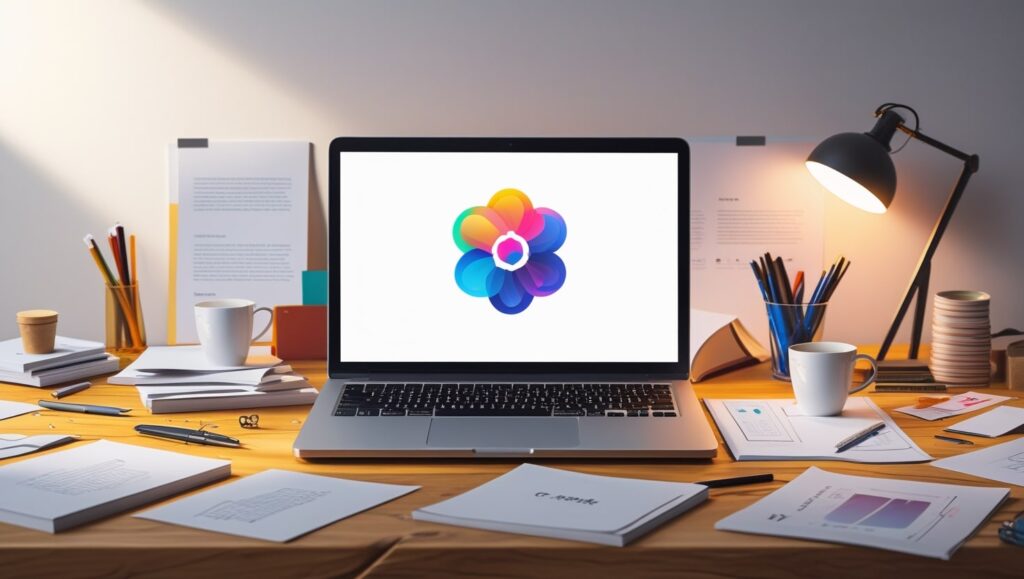
A main Creative Graphic Design Ideas for owners of small businesses is designing a distinctive logo. A logo is generally the first thing customers see when they see your brand. It needs to:
- Easy to recall but not meaningless.
- Proof of your corporate beliefs.
- Can be viewed on a number of media platforms.
You can make an effective logo without expensive help from a big agency. Many small business owners use Canva, Looka and Adobe Express for the templates they need to create unique designs.
2. A consistent brand image is shown on all the platforms the company uses.
Sticking to one brand style makes a strong idea for Creative graphic design ideas. Your brand’s palette of colors, type of text, icons and images must be the same everywhere.
Social networks
- Websites
- Packaging
- Having business cards
- Advertising content
Keeping your brand regular and the same helps your audience become familiar with it. This type of design is simple and affordable, so even businesses getting launched can use it.
3. Tell your stories using Infographics.
Small business owners frequently have to break down complex ideas or highlight what makes their business valuable. To present data in a way that people find interesting, infographics are some of the best Creative Graphic Design Ideas.
They suit these needs best:
- Evaluating products.
- Tutorials
- Researchers study statistics and case studies
Make your infographics look like a professional by using design tools such as Piktochart or Visme. Improving the graphics in educational materials improves your authority and holds your audience’s attention.
4. Standout Visual Design on Social Media
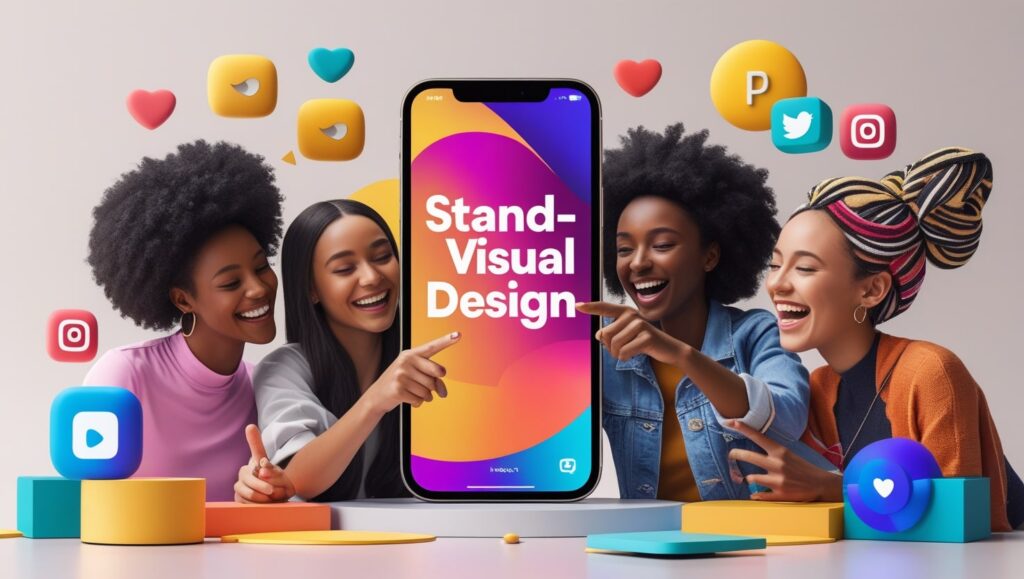
To be seen on social media, your profile should be different from a sea of competitors. Engaging and designed visuals are a great Creative Graphic Design Ideas for improving how users connect and your follower count. Designing is something that you can achieve:
- Telling a story with the same Instagram template.
- Posts that list relevant quotes from the brand.
- Posting banners to advertise sales or the start of a new product.
For social media posts, try using Canva or Crello which have templates that are adjusted for the different social networks. Such tools help you play around with various Creative Graphic Design Ideas in an easy and efficient manner.
5. Salespeople can use Professional Business Cards That Make a Statement
Even with all the digital options, business cards are still helpful. Good design on your business card helps others easily remember you. Some creative graphic design ideas for business cards that businesses might use are:
- Websites with a minimal look and big text.
- Shapes cut into paper by a die.
- QR codes that let you talk straight to the business.
Pick sharp colors and clear fonts so the design challenges users and looks creative. If you design your business card well, it can introduce your brand to others anywhere.
6. Distinct Packaging
For physical products, your packaging can display the character of your company. Small businesses usually pay less attention to packaging, but it is highly effective at affecting buyers’ decisions.
Consider:
- Biodegradable, marked wrapping paper.
- Labels and thank-you notes can be created just for the event.
- Script and swirly fonts to make everything unique.
The right packaging can encourage a buyer to become a regular loyal customer. Graphic design concepts for packaging raise the perception of your products’ value.
7. Website Graphics and Banners
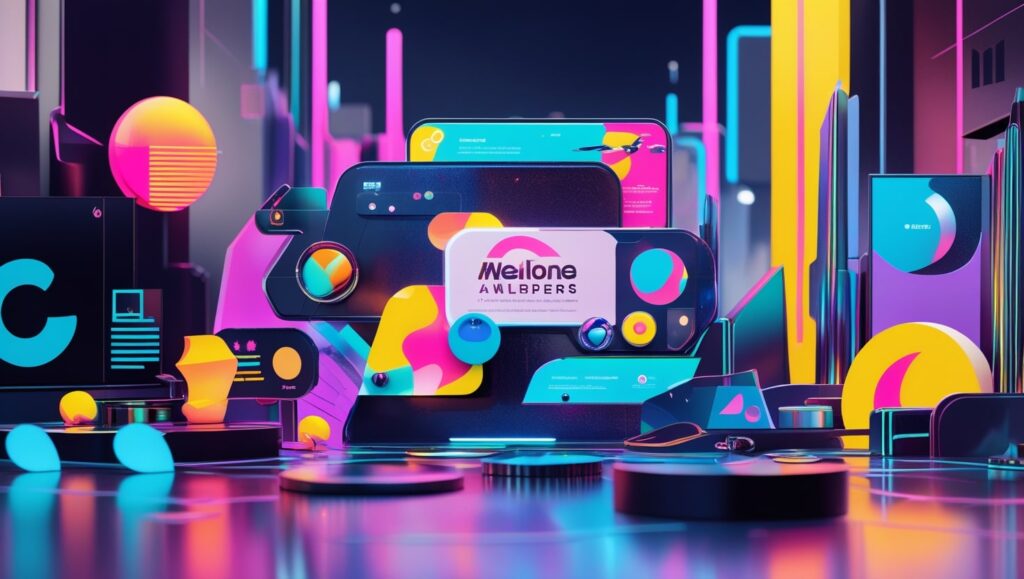
A website that looks nice helps gain credibility and influences how guests use it. It’s not possible to ignore the state of your digital store. Ensuring Creative Graphic Design Ideas in your website helps you:
- Easy to use navigation.
- Using a visual hierarchy so readers can read the page more easily.
- Direct users to take action with call-to-action (CTA) buttons and interactive banners.
Using WordPress or Shopify, you can include custom visuals. Improve the experience for visitors and the performance of your SEO by using banner templates, stock photos and pictures of your business.
8. Email Marketing Visuals Made to Convert
Email remains a top digital strategy that companies use. Improve interest by using Creative Graphic Design Ideas in:
- Email headers are part of the email header section.
- Specially made illustrations.
- Call-to-Action buttons that include visual elements.
Having a strong design for your email helps readers notice, view and react. Try to work in your branding material so customers remember your business.
9. Content Made by User with Cool Stylizing
Customers creating content is good for both your business and them. Creating a design identity for the page transforms users’ content into advertisements for your company. Choose Creative Graphic Design Ideas for:
- Post photos sent in by customers, with a unique branded layer over them.
- Make testimonials look great on the page.
- craft UGC contests that are centered around certain visual concepts.
It lets community leaders connect with people and lets your target audience know who you are.
10. Seasonal and occasion-themed Offers

Designs for social media posts can also be based on the current time of year or nearby events. As a result, develop new Creative Graphic Design Ideas for:
- Products photographed with a Christmas theme.
- Valentine’s Day sale signs and posters.
- Festivals and days organized in the community.
Both timely and well-planned designs can draw in more visitors and boost how actively people interact if they are promoted strategically.
11. Taking product photos as well as custom mockups
Online product sales require eye-catching pictures and designs. Try Creative Graphic Design Ideas instead of plain stock photographs.
- Pictures with a branded background.
- Regular use of the same filters.
- Photos showing a lifestyle with written text.
By using a smartphone and editing apps, it is possible to take professional-looking photos. Mix pictures with graphic elements to create interesting ads or catalogues.
12. Animated Graphic and Brief Videos
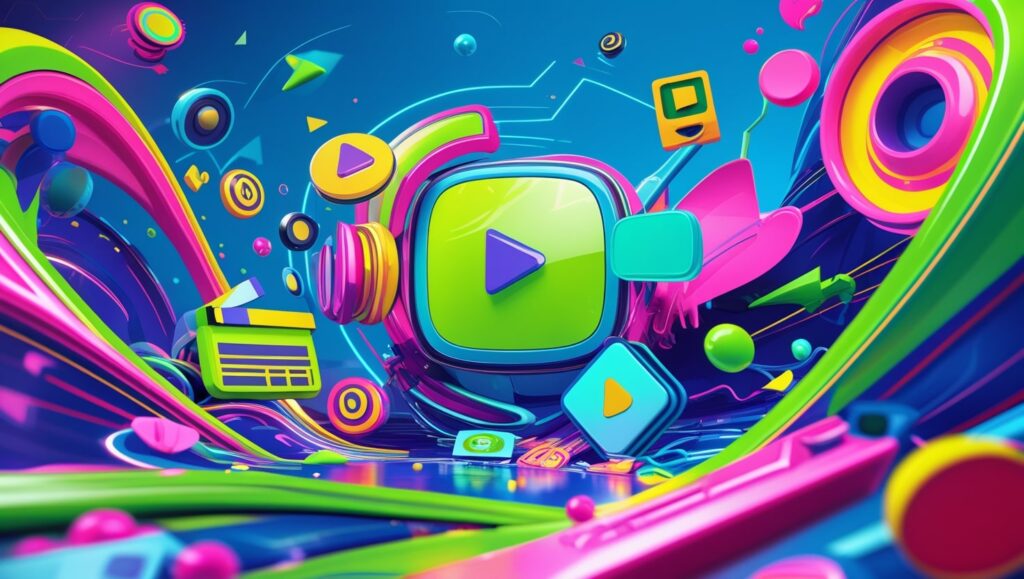
Motion draws the eye. Apps like Adobe Express and Canva Pro make it straightforward to make animated graphics. Examples of great Creative Graphic Design Ideas for animation are:
- Animation in logos.
- Videos that describe things with straightforward animations.
- Products can be displayed with movements between them.
Using motion graphics, small businesses can interact better with their audience on Instagram and TikTok.
13. Interactive Content
They get to play a role in the experience with interactive designs. A few creative graphic design ideas can be seen here:
- Quizzes that come with unique pictures or graphics.
- Timelines that let users interact.
- The presence of interactive graphics.
They amuse and manage to attract a larger audience to interact. They help the most in digital settings and when generating leads.
14. Developing flyers or posters through print.
Print media is not vanishing. Using flyers and posters is still a good option for local businesses. Updating your logo involves using Creative Graphic Design Ideas which can include
- Text that is bold and placed over images.
- Gradients in the colors used.
- Using wide open spaces and adding vivid, prominent highlights.
Various local print shops or sites like Vistaprint exist to create your ideas into printed documents without breaking the bank.
15. Design inspirational quotes for use online.
Quotes are popular topics for people to share. Use creative ways in graphic design so your quotes match the core values of your business. For example:
- A bakery distributing encouraging food messages.
- A fitness coach giving examples of encouraging quotes.
- A fashion brand giving advice on style.
Use bits of your brand colors and logos in the background so that people will share your quotes while also promoting your brand.
Frequently asked questions (FAQs)
- What tools should small business owners focus on for graphic design?
Among the tools, you can use Canva, Adobe Express, Figma, Visme and Piktochart without paying anything or only a small fee. Every one includes useful templates and features made for using Creative Graphic Design Ideas.
- How might I think of fresh and interesting design ideas?
Begin by looking into the competition and the people you want to sell to. Designers use mood boards, collections of colors and typography combinations for ideas. Base your creative graphic ideas on popular trends but use your company’s unique identity to create something distinctive.
- Can template designs work or do I need to create everything myself?
If you do not have design experience, using templates is a good thing to do. Personalize the emails with your brand’s colors, typefaces and logos to fit your brand. It is still possible to create many Creative Ideas with the help of a template.
- How regularly should I revise my website’s designs?
Update the designs in your store when a new season arrives or for major campaigns. Making regular changes ensures your brand looks up-to-date and interesting. Come up with fresh Creative Graphic Design Ideas every couple of months or whenever a new product/service is launched.
5. Do images have greater importance than written information?
There are many ways in which yes. Images are processed by the brain much more quickly than what is read. It means well-designed material can draw people in and message them right away. Having a mix of great visuals and established copy is the secret to effective Creative Graphic Design.
Conclusion
Smart, well-done design can help small owners make big changes to their brand and its marketing. If you apply these 15 Creative Graphic Design Ideas, your brand’s look will be better and you’ll also increase how much customers engage with and rely on your company.
Don’t worry if you’re not a professional, because you can still use these tips. Clever Graphic Design Ideas and suitable resources allow small business owners to enhance their company successfully.
Use this resource to help you and look into the Graphic Design concepts that are suitable for your business. Creating a logo for the first time, starting a fresh campaign or designing product packaging always allows you to think creatively.
Graphics Design
How to Create Stunning Social Media Graphics for Free

How to Create Stunning Social Media Graphics for Free
Social media graphics should be captivating and attention-grabbing to improve your visibility on the internet, whether you belong to a brand, work as an influencer or manage a small business. You won’t have to purchase high-level software or find a graphics designer to create beautiful visuals. Here, we will cover everything you should know about designing your social media graphics for free. On top of design strategies, you will also study tips and recommendations to create visuals that your followers will like.
The importance of using social media graphics.
You will see social media graphics posted on Facebook, Instagram, Twitter and LinkedIn among other platforms. They are a fast way to share information and ensure viewers or readers pay attention. Having quality graphics can encourage more people to interact with your business, recognize your brand and visit your site. Social media graphics are crucial for any marketing strategy because we process them almost 60,000 times faster than we process text.
Programs for Creating Social Media Graphics for Free
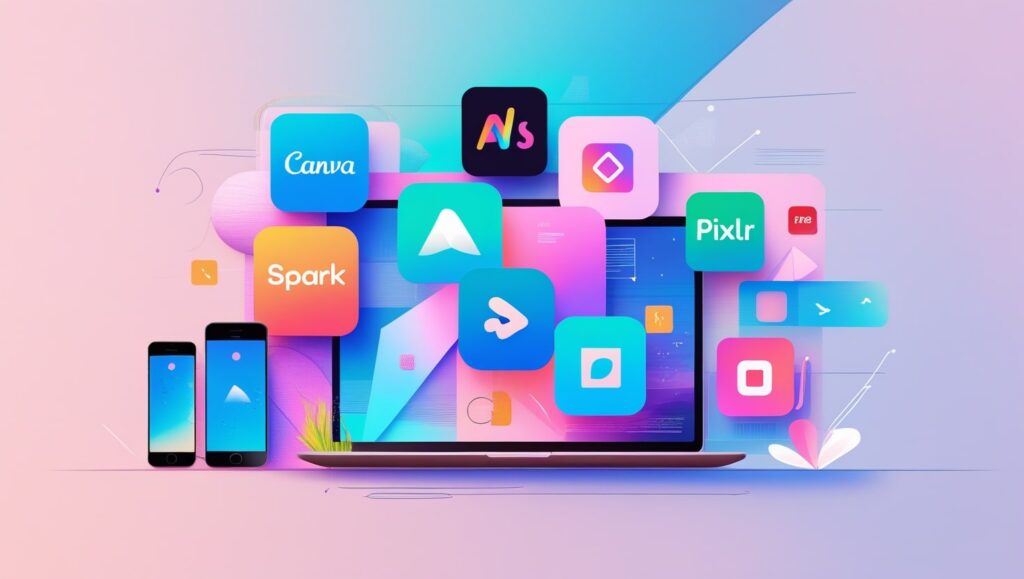
Simple tools are all you need to design pro-quality images for your social media. Here is a list of top-quality free tools you can try:
- With Canva, you can find different kinds of templates for most popular social media sites. Easy interactions with the interface.
- Crello (VistaCreate) enables you to use animated designs and create your own templates.
- Adobe Express – A free offer from Adobe that allows users to design graphics easily.
- With Pixlr, you can modify images and make various social media graphics instantly on the web.
- You can use GIMP instead of Photoshop, as it offers strong editing options and is available free of charge.
Such tools are free to use, so you can play around with templates, various fonts and different colors for your social media graphics posts until you achieve your desired look. You may access their libraries of photos and illustrations which saves your budget and keeps your posts interesting.
Understanding What You Need
Every social media graphics site might need a unique size of graphics:
Facebook Posts require images that are 1200 pixels wide and 630 pixels tall.
- For Instagram, set your photos to 1080 x 1080 pixels.
- Posts on Twitter should be 1024 x 512 pixels
- The optimal size for your LinkedIn Posts is 1200 x 628 pixels.
Choose the right size for your graphics to prevent your art from being distorted and looking unprofessional. When your graphics are similar on all your social media platforms, people are more likely to remember your brand. Since more people use mobile devices to access social media, it’s wise to set up your graphics for better viewing on them.
Guidelines for Creating Amazing Graphics for Social Media

- Opt for high-quality images to make sure your graphics are eye-catching.
- Be sure to use the same colors, fonts and logo in all your graphics.
- Focus on keeping things simple; most people enjoy easy-to-use websites.
- Use fonts that are easy to read on mobile devices.
- Arrange Content Differently – Put content in various layouts and notice which one the audience interactes with most.
- Group the essential information with different font sizes or colors that stand out.
- Let your images communicate a message that is in line with your brand.
- Add Some Icons – Decorate your visuals with icons suitable for the event.
- Try using contrast and vibrant colors to make your content visible among other posts.
- Ensure Your Design is Aligned and Has Balanced Spaces for a Professional Look.
Good Methods for Social Media Graphics
- Put the most important text in the places where it will be most visible.
- Choose tones that are opposite of each other to emphasize the topics of your UI.
- Allow your design to look clean and comfortable by including unoccupied space.
- Use the same colors and fonts to ensure your brand is instantly recognizable.
- Always test your designs on social media to find out what’s most effective.
- Adapt the appearance of your graphics to different cultures if your target customers are from various countries.
- Display Your Logo or Watermark: Use them to make your brand more recognizable.
Tips for Designing for Mobile and Tablet
The design approach depends on the platform used. For example:
- Instagram: Prioritize bright photos and telling stories. Stars, extra attention to text and interactive stickers are excellent ways to get your followers more involved.
- On Facebook, ensure your messages are easy to read and that your headers are noticeable. Carousel posts and event banners are the best types to use on Instagram.
- Twitter: Make your post clear and in plain language. I find that bold statements and quotes are effective when used in graphics.
- On LinkedIn, ensure your profile is work-related and displays your brand. More people focus on infographics and professional announcements.
- On Pinterest, choose tall images that are well-suited for infographics and tutorials.
Using Graphics to Attract Customers
The objective of social media graphics is to get your audience interested. Bring attention to your posts by including motivating phrases, engaging features and attractive designs. Social media graphics that attract attention are generally shared, widening your brand’s audience. Try using polls, question stickers and headlines to help your viewers interact and comment.
Templates ensure your work always has the same style.

They are effective in helping a company maintain its brand identity. With platforms such as Canva and Crello, you can select one of their pre-made designs and edit it to reflect your colors and fonts. It saves you money and time and it also helps maintain a similar look for your graphics in every place.
Making graphics in bulk to improve efficiency.
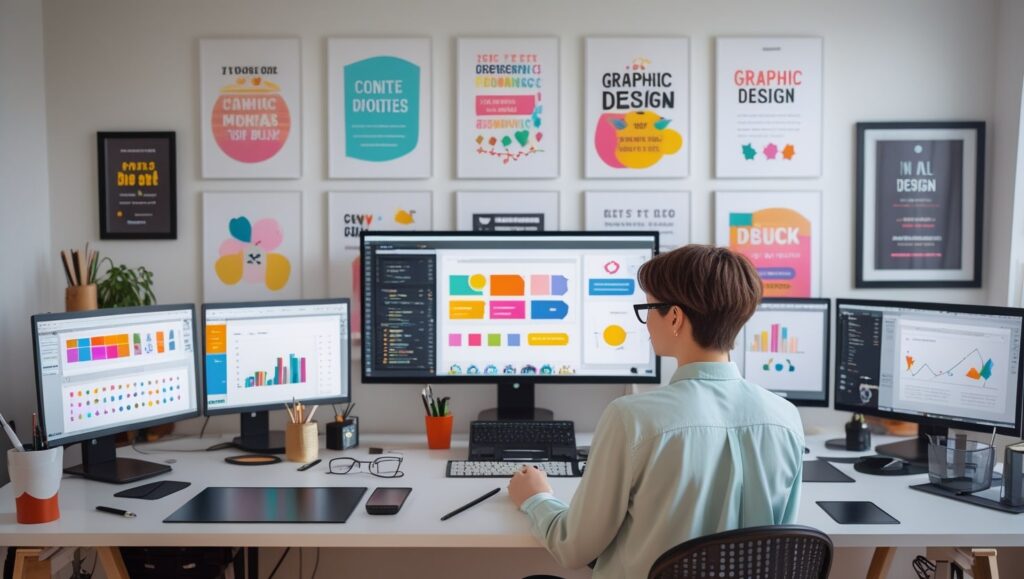
Batching your graphic designs can help you manage your social media accounts easily. If you schedule a time each week to design many graphics, you can stay consistent and avoid rushing at the last moment. Both Canva and Adobe Express enable you to reproduce designs and easily adjust them to use on various services, saving you time.
Important Tips on Making Social Media Graphics for Free
- It is possible to create impressive social media graphics without spending money?
Of course, you can use CSS within a LinkedIn account. You can create high-quality graphics for free with Canva, Crello (VistaCreate), Adobe Express, Pixlr and GIMP. They provide you with a range of templates, fonts and images to help you create your designs.
- What is a great program that I can use for free to make social media graphics?
Even though all the tools are effective, Canva becomes the top choice due to its user-friendliness, wide range of templates and broad design options. No matter how experienced you are, using Adobe Photoshop can help you excel in design.
- Should I make my social media graphics large or small?
How big a group should be on a platform varies from platform to platform.
- Facebook posts should be 1200 px wide and 630 px high.
- You should upload photos with a size of 1080 x 1080 pixels for Instagram.
- Your Twitter posts should be at most 1024 x 512 pixels.
- You should post photos on LinkedIn that are 1200 pixels wide and 628 pixels tall.
- The size of a Pinterest Pin is 1000 pixels wide by 1500 pixels high.
Ensure the size of your designs is correct so that there is no pixelation or parts of the image are strangely cropped.
- What strategies do I use to ensure my brand’s style is maintained on social media?
Make sure your logo, color palette and fonts appear the same on all your designs. With Canva, you can create a brand kit to ensure your designs always look consistent.
- Will I need to be a graphic designer to make social media graphics?
In fact, virtual tours aren’t limited to this situation. There are many online tools available for people who lack design skills. Thanks to predesigned templates, simple drag-and-drop options and tutorials, creating professional designs is quite simple.
- Can I schedule my social media images before I post?
Yes, Buffer, Hootsuite and Canva’s Content Planner provide a way to schedule your social media graphics for future publishing. This aids in creating a regular schedule and spares you time each day.
- How do I create social media graphics that people find engaging?
To encourage people to be more active:
- Include pictures that are eye-catching and clear
- In addition, add a call-to-action (CTA) message.
- Try using stickers that get people involved or polls.
- Design infographics that can be shared.
- Utilize stylish lettering and attractive article headings.
- Should I adapt my graphics for every game console and PC?
All the platforms offer different suggestions for image and design sizes. Every time you change your graphics for a different platform, they will look organized and professional.
- How many new graphics should I publish on social media every day?
It is best to publish around 3 to 5 times a week, unless your marketing strategy calls for something else. If you create your designs in batches, it will save you time and help you stick to your style.
- How will I determine the effectiveness of my graphics on social media?
Your graphics can be evaluated by watching the following trends:
- Measurement of likes, shares and comments
- Number of people clicking on the link if it opens a website
- These terms relate to how many times an ad is served and seen.
- Conversions are important aspects of a marketing campaign.
Metrics such as these can be evaluated with analytics tools from Facebook, Instagram, Hootsuite and Buffer.
Graphics Design
Best Laptops for Graphic Designers – 2025 Buying Guide

Best Laptops for Graphic Designers – 2025 Buying Guide
Though talent is a must, coming out on top in the world of graphic design requires the ability to use the right devices to enable creative vision. In the year 2025, there is unheard of demand of laptops geared specifically towards the needs of graphic designers, by the technology sector. The fact that your career in graphic design is mature or you’re still starting, can affect your efficiency and output greatly if you have the best laptop for graphic design.
Throughout this guide, we are going to drill down on the best laptops for graphic designers in 2025. With intense research on the specs, efficiency, build and pricing of the laptops, you will be able to determine the best fit for your graphic design workflow.
Choosing the best laptop is important for achieving most proficiency as a graphic designer.

Graphic design tasks are resource-intensive. Creating workflows that incorporate Adobe Photoshop, Illustrator, CorelDRAW and 3D designs requires high speed processors, bright images and ample RAM to perform best. Laptops for graphic designers a properly chosen laptop allows you to do complex projects without interruption, and allows you to have uninterrupted creativity.
Having the right laptop means:
- Faster rendering times
- Smooth multitasking with heavy software
- Vivid and clear visuals for better control of color.
- Enhanced flexibility and mobility, as well as, increased battery utilization time for mobile design work.
Top features that can be considered to choose laptops to design Graphic Designers.

It’s important to understand which key strengths are the most valuable before reducing your options…<<
- Processor (CPU): The heart of any laptop. In graphic designing, you should choose a processor, which is as strong as Intel i7 or i9 or AMD Ryzen 7 or 9.
- Graphics Card (GPU): A graphics card like the NVIDIA GeForce RTX or AMD Radeon will ensure optimal results and a sleek rendering of 3D designs work.
- RAM: For most graphic design jobs, a minimum of 16gb is recommended but 32gb is highly recommended for multitasking and efficiency with large projects.
- Storage (SSD): Choosing 512GB or greater of fast SSD storage substantially reduces boot times and offers better organization of files.
- Display Quality: laptops for graphic designers screen should support at least 1920×1080 resolution, showing true colours (100% sRGB), and bright images.
- Portability and Battery Life: Select a light and energy efficient machine that will enable designers to work comfortably, off desk.
- Connectivity Options: Ensure that it is compatible with relevant peripherals through ports like USB-C, HDMI and even a built-in SD card reader.
Top Laptops for Graphic Designers in 2025
Below, we’ve curated a list of the best Laptops for Graphic Designers this year, covering various budgets and performance needs:
- Apple MacBook Pro 16″ (2025)
- M3 Max Chip with 16-core GPU
- 32GB RAM, 1TB SSD
- Liquid Retina XDR display with ProMotion
- Perfect for color accuracy and heavy rendering tasks
- Dell XPS 17 (2025)
- Intel i9 14th Gen Processor
- NVIDIA RTX 4070 GPU
- 32GB RAM, 1TB SSD
- InfinityEdge 4K display for crisp visuals
- HP Spectre x360 (2025)
- Intel i7 14th Gen Processor
- Intel Iris Xe Graphics
- 16GB RAM, 512GB SSD
- 2-in-1 convertible design with a 4K OLED display
- Asus ProArt StudioBook 16
- AMD Ryzen 9 7945HX
- NVIDIA GeForce RTX 4080
- 32GB RAM, 1TB SSD
- 16-inch 3.2K OLED display with 100% DCI-P3
- Microsoft Surface Laptop Studio 2
- Intel i7 14th Gen Processor
- NVIDIA GeForce RTX 4060
- 32GB RAM, 1TB SSD
- Dynamic woven hinge design and PixelSense display
- Razer Blade 18 (2025)
- Intel i9 14th Gen Processor
- NVIDIA GeForce RTX 4090
- 64GB RAM, 2TB SSD
- 18-inch QHD+ display with 240Hz refresh rate
- Lenovo ThinkPad X1 Extreme Gen 5
- Intel i9 14th Gen Processor
- NVIDIA RTX 4080
- 32GB RAM, 1TB SSD
- 4K display with Dolby Vision HDR
- Acer ConceptD 7 Ezel
- Intel i7 14th Gen Processor
- NVIDIA GeForce RTX 4070
- 32GB RAM, 1TB SSD
- Convertible 4K display with touch support
- MSI Creator Z16
- Intel i7 14th Gen Processor
- NVIDIA GeForce RTX 4060
- 32GB RAM, 1TB SSD
- 16-inch QHD+ display
- LG Gram 17 (2025)
- Intel i7 14th Gen Processor
- Intel Iris Xe Graphics
- 16GB RAM, 1TB SSD
- Ultra-lightweight with a 17-inch WQXGA display
Overview top laptops for graphic designers professionals’
We evaluated each of them with respect to processing capability, prevalence of visuals, battery efficiency, and carrying convenience. Through mentioning these comparisons you’ll manage to find the best Laptops for Graphic Designers in 2025 based on your personal needs.
Frequently Asked Questions about Laptops that are for Graphic Designers
1.What criteria around the specifications should I be looking for if I want to do graphic design?
- Choose a laptop with a powerful CPU, skills to run a dedicated GPU, 16GB RAM or more, and the SSD for no interruption workflow.
2.Do graphic designers need to use graphics processing units?
- Yes, it enables project file generations with a faster rate and has improved support for high resolution uses.
3.A suggested amount of RAM for graphics software is at least 16GB, but 32GB is preferable to run multiple applications at once.
- Laptops for graphic designers at least 16 GB RAM is aggravated but 32GB offers great multiplication functions.
4.Is graphic design a stronger suit for MacBooks than for Windows laptops?
- Both are excellent; When compared by software ability, display and color accuracy it is the MacBook which comes out on top while the software is the one known in the market for greater availability in models.
5.For best design work, the recommended screen size is between 15 to 17 inches.
- Best working conditions laptops for graphic designers are displays between 15–17 inches with high resolution.
-
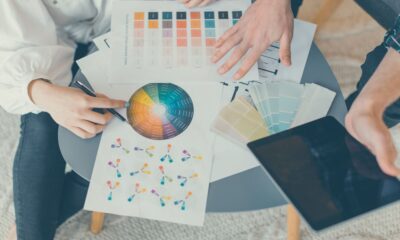
 Graphics Design1 year ago
Graphics Design1 year ago7.Exploring the Importance of Color Theory Charts
-

 Graphics Design9 months ago
Graphics Design9 months ago10 Stunning Gradient Design Trends You Need to Know in 2024
-
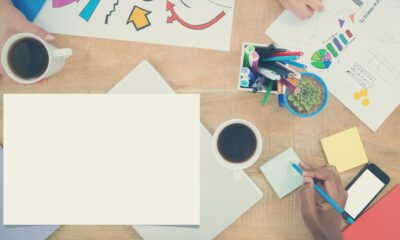
 Graphics Design1 year ago
Graphics Design1 year ago15.The Importance of Effective Flyer Design in Marketing
-

 Graphics Design1 year ago
Graphics Design1 year ago14.Mastering the Art of Print Design: Tips and Tricks
-

 Graphics Design1 year ago
Graphics Design1 year ago10.The Latest Trends in Web Design and Development
-
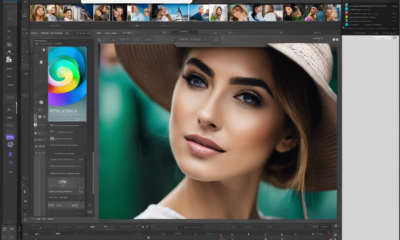
 Graphics Design1 year ago
Graphics Design1 year ago13.Exploring the Latest Trends in Photo Editing Software
-
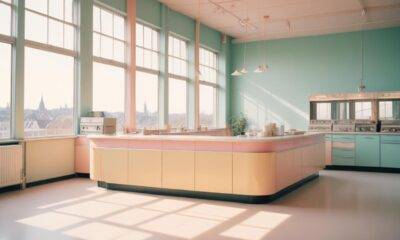
 Graphics Design1 year ago
Graphics Design1 year ago29.Retro Design Is Making a Comeback in Modern Spaces
-

 Graphics Design4 months ago
Graphics Design4 months ago2025 Logo Design Trends: What’s In, What’s Out?




